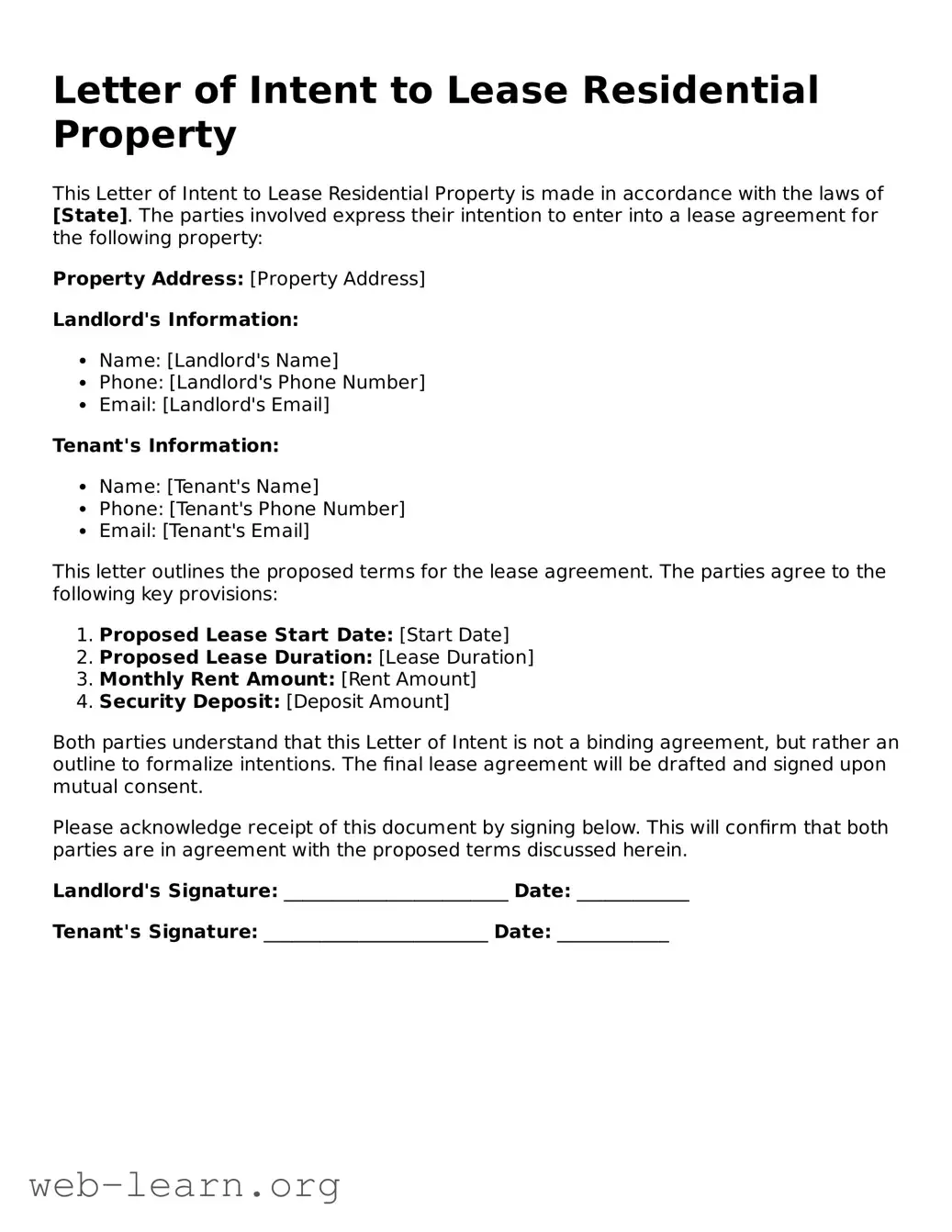Completing a Letter of Intent to Lease Residential Property form can seem straightforward, but many individuals fall into common traps. One significant mistake is not including all necessary personal information. It is crucial to provide accurate and complete details, such as full names, addresses, and contact information. Omitting any of this information can lead to confusion and delays in the leasing process.
Another pitfall is neglecting to clarify the intended lease term. If you fail to specify whether you are looking for a short-term or long-term lease, it may result in misunderstandings between you and the landlord. The length of the lease affects not just the rental price but also your overall living situation.
A third mistake often made is overlooking the financial details of the lease. It's important to state the monthly rent amount and any additional costs, such as utilities or maintenance fees. Clear financial terms can prevent disputes later on, ensuring both parties are aligned on expectations.
Some individuals forget to mention desired move-in dates. Without a specified date, negotiations may become complicated, as the landlord may have particular availability that does not align with your needs. Including this information upfront fosters smoother communication.
Failing to express specific property features of interest is also common. You may have preferences regarding the number of bedrooms, parking availability, or pet policies. Not articulating these can lead to feelings of disappointment when visiting potential residences.
Additionally, many forget to inquire about potential renovations or repairs. If you have specific concerns or needs regarding the property, addressing these in your letter is important. Ignoring this can result in misunderstandings about the property’s condition and your expectations.
Another mistake is not being professional in tone. While the form is informal, a respectful and courteous tone can set the right tone for future interactions with the landlord. A professional demeanor can often yield better responses.
Poor organization of the information can cloud your intentions as well. It's essential to present the details clearly and concisely. A well-structured letter is easier for landlords to read and respond to, making it more likely that you’ll capture their attention positively.
Inaccurate or unrealistic expectations can also lead to issues. Being honest about what you can afford and what you really need helps ensure that you and the landlord start off on the right foot. Setting unrealistic terms can sour the negotiation process quickly.
Finally, neglecting to proofread the Letter of Intent can lead to errors that might undermine your credibility. Simple mistakes in spelling or grammar can create misunderstandings and diminish the professionalism of your application. Taking a moment to review your document can go a long way toward presenting yourself as a serious renter.
